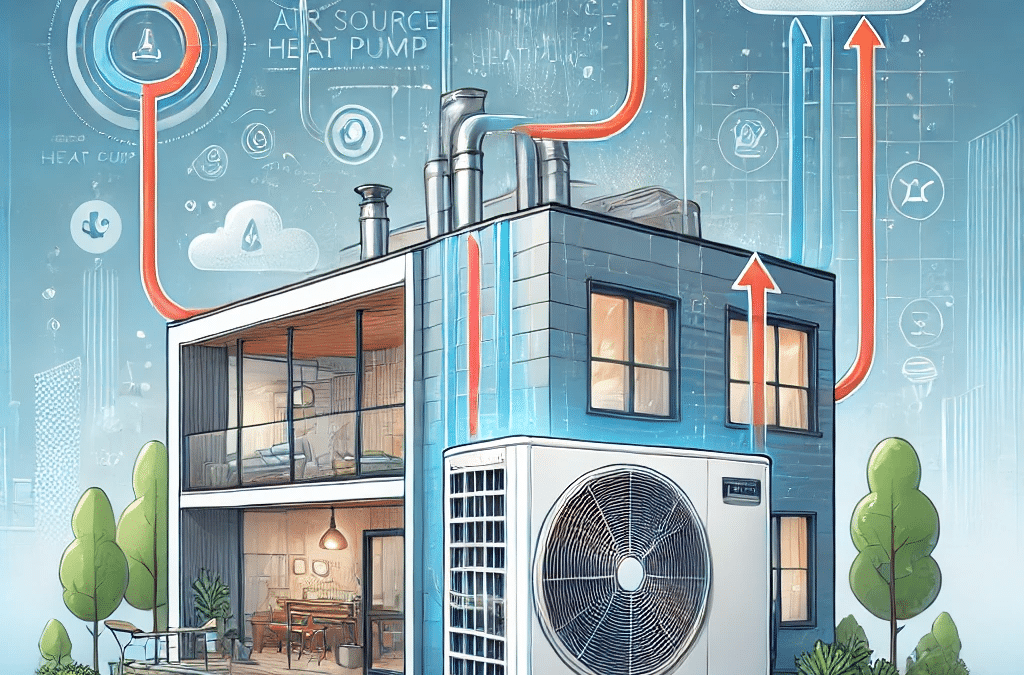Background
The blog post we published back in March entitled “How Ditching Natural Gas Service” generated quite a bit of buzz and we received a good deal of feedback, both supportive and critical. While we stand by the calculations as a way to better understand the underlying assumptions in Energy Star Portfolio Manager (ESPM), we did provide sufficient context to the potency of a technology we mentioned only in passing: heat pumps. HEAT PUMPS ARE AMAZING.
Energy Star Portfolio Manager Assumptions Overdue for an Update
As a reminder, ESPM essentially penalizes electric energy consumption vis a vis natural gas consumption because the inefficiency of transmitting and distributing electricity is so much greater than doing so for natural gas. Specifically, ESPM assumes electricity will take 267% more energy to transport than natural gas will.
However, these line loss factors, referred to as National Source-Site Ratio, have not been updated since 2018. Not sure if you’ve noticed, but a lot has changed in the past 6 years and this figure is in desperate need for an update. Historically, the National Source-Site Ratio has accelerated in increasing efficiency. In 2007, the figure was 3.34, decreasing to 3.14 in 2013, and finally settling in at 2.8 in 2018, which we still use.
Using a simple linear forecast, it would not be surprising to see the actual ratio at 2.4 today. But this is all conjecture… let’s get back to the heat pumps!
How Heat Pumps Break the Energy Efficiency Equation
One of the first lessons we learn in high school physics is the conservation of energy, i.e., that energy can not be created or destroyed. When this is applied to mechanical systems it results in the equation energy input = energy output. The efficiency of a machine refers to the percentage of energy input that results in useful work, as opposed to wasted energy.
For example, a midrange natural gas fired boiler might take in 1250 MBtus of natural gas energy to provide 1000 MBtus of useful heat to the interior space of the building. The other 250 MBtus is lost during the combustion process exhaust and heat losses to areas we don’t care about heating, like the walls of the boiler or radiating into the air around the boiler.
Now let’s compare it to a midrange air source heat pump. To provide the same 1000 MBtus of space heat, the heat pump requires only 400 MBtus of electricity. That’s right, its useful energy output is 2.5 times greater than the grid energy put into the machine. Did we just break physics? Are perpetual motion machines on the horizon?
No! The magic of heat pumps is that they are able to harness the latent heat energy in the outside air and then convert it into either hotter or cooler inside air. In the previous example, the air source heat pump captures over 600 MBtus of energy from the air and uses it to heat the building, thus balancing the energy equation. From an end user perspective, we don’t care how much energy the heat pumps take from the outside, because we aren’t paying for it!
Energy Star Score Impact of Electric Air Source Heat Pumps vs High Efficiency Natural Gas Boilers
Let’s complete our analysis by factoring in the energy efficiency of heating systems with the different National Source-Site Ratios for electric vs natural gas. Below we have a table showing various levels of efficiency for both technologies.

Notably, a midrange air source heat pump is presently assumed to use a total of 1120 MBtus of grid energy to deliver 1000 MBtus of usable space heat. This contrasts to the midrange natural gas fired boiler system, which requires 1313 MBtus of grid energy for the same task. In other words, the electric air source heat pump is 17% better for your Energy Star Score than the gas fired boiler.
However, when we compare a high efficiency natural gas boiler to that of a midrange air source heat pump, we see an almost identical effect on the Energy Star Score. The high efficiency natural gas boiler also outperforms a lower efficiency air source heat pump by 20%.
Conclusion: Study Your Heating Options Carefully Before Proceeding
We can conclude from this analysis that switching from natural gas heat sources to electric heat sources will NOT conclusively reduce your building’s Energy Star Score. It’s critical to perform a detailed engineering study of proposed options in order to estimate their impact on the score. Additionally, if the US Department of Energy does end up providing the urgently needed update to the National Source-Site Ratio, this will likely swing the equations further in favor of electric appliances.
If you are considering any major upgrades to your HVAC system in order to comply with BEPS, please reach out to Honeydew Energy Advisors using the form below for a free consultation on how it can impact your Energy Star Score.
Citation: Energy Star Article “How are site and source energy affected by electrification?”

